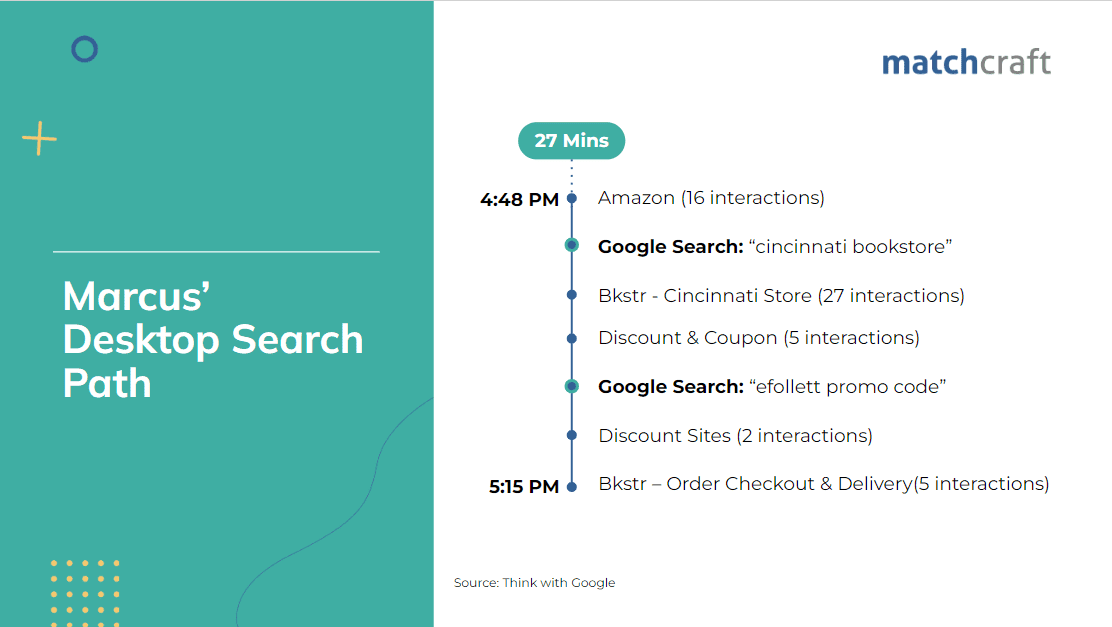However, the consumer’s path to purchase has changed drastically. Search used to be synonymous with shopping. It used to start with a search engine and ended with either a shopping cart conversion online or an in-store purchase. Google was a major factor in your decision-making and organizing your life.
In this article, we will share the effect of social commerce in Europe – the rise of Amazon, B2B Social, and the evolution of the consumer path to purchase.
Google Remains King

Younger, native users have different expectations
According to Google Senior Vice President Prabhakar Raghavan divulged to Fortune, 40% of young people now go to TikTok and Instagram when looking for places for lunch, not Google Search.
Younger, native internet users have very different expectations when it comes to their digital shopping experience. These users don’t tend to type in keywords, contrary to what we expect. Rather, they discover content in new, more immersive ways. They navigate through a host of sites and variations of searches before making a purchase. Here’s an example of how a consumer researches first on various sites like Amazon, before finally making a purchase decision on another platform.

Social Commerce is impacting shopping behaviors
Social Commerce has emerged as a dominant player in the online shopping landscape. Globally, 64% of social media users purchased on social commerce. From product discovery to the check-out process, it all takes place on a social media platform.
In the UK, 50% of online shoppers have purchased products while browsing on their social sites. Completely impulsive, but very targeted as we all know. The UK and Ireland use Facebook, Instagram, and YouTube as top social media platforms. On the other hand, Instagram gets the most ad dollars followed by Facebook and TikTok.
Accenture projects that shopping on social media will reach $1.2 Trillion globally by 2025. That growth is predicted to be led by Gen Z and Millennial social media users.
And then, there is Amazon
A study shows that nearly 9 out of 10 consumers in the UK use Amazon to research a product. On the other hand, 41% of respondents said they had purchased after seeing an Amazon advert.
Not only has Amazon become a destination for shoppers, SMEs throughout Europe and the UK are also getting in on the action. Nearly a quarter or 24% of Amazon sellers come from 8 European countries: Germany, the UK, France, Italy, Spain, Sweden, the Netherlands, and Poland.
That 24% represents 185,000 sellers in Europe. 60% of Amazon’s revenue now comes from sellers on its third-party marketplace, not direct sales to consumers.

What about B2B?
LinkedIn is the leading platform for B2B with nearly 850 Million users across the globe and 4.4B in total ad revenue. Its position as a social channel opens the opportunity for not only advertising but influencer-style interaction with consumers.
Moreover, LinkedIn is investing $25 million in content creators. The UK Creator Accelerator program is one example – paying 200 creators to engage in their communities on LinkedIn.
We know that consumer behavior is changing, but what are the drivers behind that change?
First, the Social Shoppers
Millennials will account for ⅓ of social commerce spending in 2025, and Gen Z spending will grow fastest and be right behind millennials.
Savvy, Educated Consumers
Consumers are spending more time and visiting more sites to gather information before making a purchase, they are more educated about options, features, and prices than ever before and are heavily influenced by their peers.
- 85% of UK consumers use multiple digital touchpoints during their buying journey.
- 71% of consumers tend to use multiple marketplaces regularly for browsing, shopping, or buying.
- 16% of consumers regularly use three marketplaces for browsing, shopping, or buying. 11% use four or more.
Need for Connection
People need connection more than ever in today’s digital world. They want to purchase from businesses that they trust. That trust is built through social media influence and reviews in marketplaces.
It has become essential for businesses to meet them where they are – through visually-driven content and platforms.
How do we help local businesses adapt?
So how do we help local businesses move from “Search First”?
Meet them where they are
First and foremost, help local businesses get reviews. Consumers are 2.4x more likely to trust user-generated content than what businesses tell on their websites. You can see the prevalence of influencers in TikTok, Youtube, and Instagram – driving ad dollars and enormous traffic to featured brands.
LinkedIn is no exception as well, where business owners become their own brand ambassadors. People want to hear from people. They want to build that connection.

Connecting across Multiple Channels
Having representation across channels is a necessity for SMEs. Consumers are using multiple channels to inform their purchase decisions and SMEs need to be represented in the places their customers are shopping.
- 73% of consumers regularly use multiple engagement channels to interact with a preferred retailer
- Multi-channel B2C campaigns see a 24% greater return on investment compared to single-channel campaigns.
Key Takeaways: The Future of Commerce
The consumer journey is no longer limited to a simple Google Search query. It has evolved to multiple touchpoints with social commerce becoming the biggest yet. Businesses must consider the fact that consumers will spend USD 1.2 Trillion by 2025, led by Millenials and Gen-Z.
Moreover, it is our job to help businesses find and meet consumers. Particularly, through visually-driven formats and platforms.